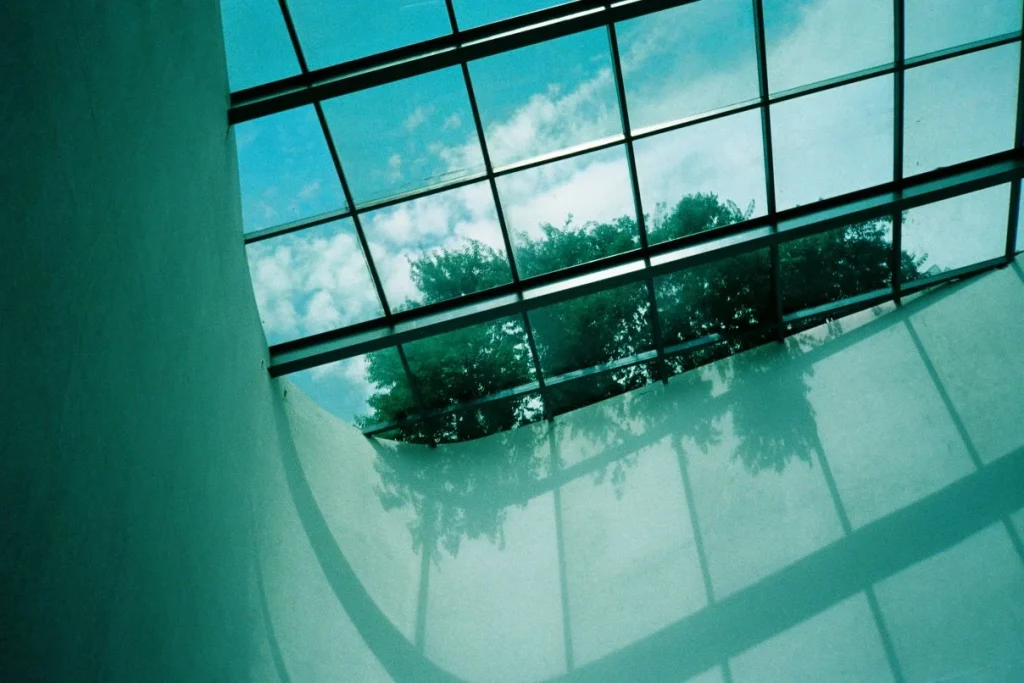Before discussing electrochromic glass, it is first important to understand the concept of transmittance, which refers to how much light is able to pass through a material. For the typical clear glass, there is no reduction of transmittance of light, as well as heat, coming from the sun. Curtains and blinds are tools purposed for blocking out unwanted heat and natural light during the daytime, however, a more recent innovation in smart glass technology, called electrochromic smart glass or dynamic glass, proves itself to be more useful for your house for sale in Cavite.
What Is Electrochromic Glass?
Electrochromic glass is able to replace the function of curtains and blinds while being more energy efficient altogether. Its design allows a person to change the transmittance from transparent to whatever degree of opaqueness is desired for blocking out outdoor visible light and heat. Blinds or curtains, unlike electrochromic glass, take up more room space, require regular washing, and only offer a fixed degree of blocking out light and heat. Electrochromic glasses are designed to take away these inconveniences.

How Does an Electrochromic Glass Work?
Electrochromic glass’ ability to alter its transmittance at different levels is because of the materials that make up its components. Generally, an electrochromic glass will have layers, from top to bottom, consisting of the following: glass, transparent conductor, electrochromic layer, electrolyte layer, transparent conductor, and glass. The two electrodes in the middle of the electrochromic glass, which have a separator in between them, are sandwiched between two transparent layers.
Along with a metal-oxide coating applied, which is similar to the ones used in manufacturing silicon computer chips, electrochromic glass works by having lithium ions move between the two electrodes. When voltage is applied, the lithium ions move to one of the two electrodes so that they can reflect light away; and when this occurs, the reflection of light from the lithium ions will be observed as the electrochromic light turning opaque. This change can be reversible according to what the user prefers, allowing for the electrochromic glass to change from opaque to transparent.
Types of Smart Glass or Smart Window
Smart glass technologies, smart windows, switchable glass, or smart glass are divided into two classifications called passive and active technology. Passive smart windows are built to be sensitive to the surroundings and adjust the level of opaqueness accordingly. There are two kinds of passive smart windows, wherein the first is called photochromic, which is sensitive to visible light, and the second is called thermochromic, which is sensitive to heat.
Active smart windows technology center around smart window design that can be adjusted by a user since they possess a conductive layer that allows for such. Active smart glass technology is divided into suspended particle device (SPD), polymer dispersed liquid crystal (PDLC) smart glass, and electrochromic.
These dynamic windows have their own respective design, including the use of liquid crystals, solar radiation or infrared light-blocking properties, and the like. The similarity between them, however, is that the level of how much light and heat in the switchable or smart glass blocks can be adjusted by the user.
How Much Power Does Electrochromic Glass Use?
For the opaqueness of an active technology smart glass like electrochromic smart glass to be altered, a voltage of 3-5 watts per square meter (10 square feet) is used. Hence, 1-hour daily usage of electrochromic smart glass in your house for sale in Cavite is estimated to require 1.8 kWh (kilowatt-hours) per year.

Photo from smartglassvip.com
Why Is It Called Smart Glass or Smart Windows?
Smart glass technologies are called such because of their ability to adjust the opaqueness of the glass to reduce how much outdoor heat and light passes through the glass and into the inside of a building or structure. Passive smart glasses are designed to be sensitive to either heat or light, and active smart glasses are designed to enable users to adjust the level of the opaqueness of the smart glass according to the preferences of the user.
If we are to dive deeper into how electrochromic glass works: the process of lithium ions migrating between electrode layers inside the electrochromic glass is just like how rechargeable lithium-ion batteries have an electric current move between layers. The difference is that lithium-ion batteries are concerned with storing energy, while electrochromic smart glass or electrochromic windows are concerned with utilizing lithium ions to allow light to pass through the glass only to a preferred degree.
Advantages and Disadvantages of Electrochromic Glass
Smart glass or switchable glass, like most investments, comes with its own advantages and disadvantages. To be specific, the advantages and disadvantages of electrochromic glass will be discussed.
Advantages of Electrochromic Glass
The advantages of smart glass like electrochromic windows or electrochromic smart glass are centered on the function of being able to keep what’s outside strictly on the outside of the room and keep what’s inside strictly on the inside of the room. Smart glass like electrochromic windows outclasses the usual clear glass observed on existing windows of many buildings or houses in terms of increased efficiency.
Smart glass in its fully opaque state can virtually block all of the sunlight that comes in contact with it, keeping outdoor light and heat from passing through the smart glass, leading to lesser energy bills by preventing air conditioners from overworking. In addition, smart glass like electrochromic glass can block noises.
Lastly, active smart glass, such as electrochromic glass, allow users to control the level of opaqueness of the glass. Hence, if you’d like a room in your house for sale in Cavite to receive natural light at a lower level than what a transparent window would allow, an active smart glass gives you the option to change such.
Disadvantages of Electrochromic Glass
Because the technology used by smart glass is more complex than ordinary clear glass, the price for purchasing smart glass is more expensive. It is estimated that smart glass may cost 50 USD to 100 USD for every square foot of smart glass. The smart glass degrades in performance after 10-20 years, and it takes some smart glass technologies a couple of minutes for their level of opaqueness to change. Nonetheless, smart window technology is constantly improving.
Read more: Learn About the Different Window Glass Types and Types of Windows


